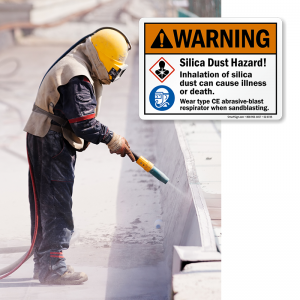Abrasive Blasting Hazards
 Abrasive blasting is used to smooth and clean rough surfaces. It works by directing a high-velocity stream of an abrasive material, such as sand, crushed walnut shells, glass beads, dry ice, or baking soda, at a surface. First developed in the late 19th century, abrasive blasting is common to remove paint, chemical buildup, or contaminants from various types of surfaces.
Abrasive blasting is used to smooth and clean rough surfaces. It works by directing a high-velocity stream of an abrasive material, such as sand, crushed walnut shells, glass beads, dry ice, or baking soda, at a surface. First developed in the late 19th century, abrasive blasting is common to remove paint, chemical buildup, or contaminants from various types of surfaces.
There are several major health hazards associated with abrasive blasting. The most common include hearing loss, respiratory illnesses including silicosis, and secondary illnesses resulting from the substance being removed. For instance, if abrasive blasting is used to remove lead paint, the exposure precautions must be taken to limit the amount of lead workers are exposed to.
Adequate ventilation and respiratory protection is essential to prevent workers from injury. Other critical safeguards to take include regular vacuuming to minimize the amount of potentially toxic dust in the air, and the use of appropriate personal protective equipment, including a NIOSH-approved respirator, face protection, eye protection, a helmet, safety shoes, coveralls, and gloves.
In some cases, the abrasive blasting material itself can contain small amounts of toxic substances, such as cadmium. In such circumstances, it may be preferable for worker safety reasons to switch to a different, less toxic type of abrasive material.
Category: Resources












